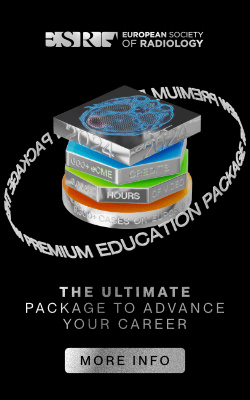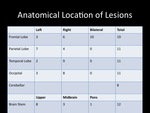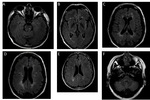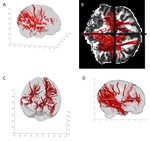Keywords:
Neuroradiology brain, MR-Diffusion/Perfusion, MR, Physiological studies, Inflammation
Authors:
R. Dunne, P. Iyer, J. F. Meaney, A. Fagan, K. Curran, N. Colgan, K. Curran, G. Boyle, J. Redmond; Dublin/IE
DOI:
10.1594/ecr2011/C-1911
Results
Out of thirty patients,
twenty two were women (73%) and eight men (27%).
Ages ranged from 20 years to 60 years.
The types of nystagmus were as follows: horizontal bidirectional gaze-evoked nystagmus (50%); unidirectional gaze evoked nystagmus (26%); pendular nystagmus (3%),
torsional up gaze nystagmus (3%); and combined nystagmus (18%).
Representative images are shown in Figure 2.
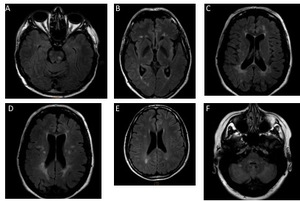
Fig.: 3T MRI Images of patients in the study showing lesions in various areas:
(A) Brainstem; (B) temporal atrophy; (C) frontal & periventricular; (D) temporal; (E) occipital; (F) cerebellar
Anatomical Location of Lesions
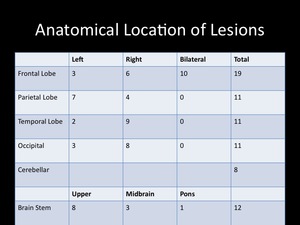
Fig.: Anatomical Location of Whitte Matter Lesions
FA values were calculated for the twenty two patients who underwent tractographic analysis starting from various cortical eye fields leading up to the brainstem.
Representative images are shown in Figure 3.
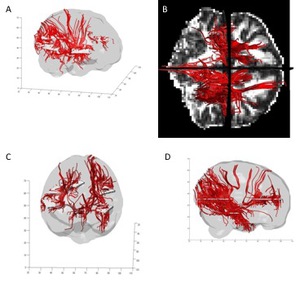
Fig.: Examples of fiber tract disruption represented in different views observed on reconstructing the tracts.
(A) Disruption in frontal area; (B) left-sided fiber disruption (C) bi frontal tract disruption (D) elevation view with bilateral frontal disruption.
Eighteen of the twenty two patients (72%) had tract disruption with tract FA values below 0.2.
Four patients had disruption of the fibre tracts from the right eye field while six had disruption on the left side.
Fibre disruptions were found in four patients each from left and right parieto-occipital eye fields.
